Wildflowers and Pollinators in August
To everybody planning a visit Falls of Clyde over the next month or so there is a load to look forward to on your visit. Corra Linn is glistening in the summer sun while up above the song of young buzzards can be heard as they circle gently above their former nest. The fruits of blaeberries and brambles are beginning to ripen, and the badgers are no doubt enjoying the abundance of bulbs and fruits, a nice change from the earthworms which dominate their diet. Our only insight which indicates their foraging interest is the abundance of snuffle holes which can be seen alongside our pathways.
In amongst these, a very special relationship is playing out, between the flowering plants and copious numbers of insects. These flowers put on a variety of enticing fragrances and bright colours, generously offering nectar for the purpose of attracting pollinators, and in doing so insects will collect their pollen and transfer it to reciprocal flowers. This process ensure that these plants will continue to proliferate, and the cycle can continue. Many plants are able to self-pollinate in the absence of an insect pollinator, but this is a last resort, and it can cause harm to the offspring to have the same parent plants. We should all be grateful for the hard work of these micro beasties. The Falls of Clyde has a fantastically diverse group of plants and pollinators and I want to shine the spotlight on the huge variety of each on the reserve.
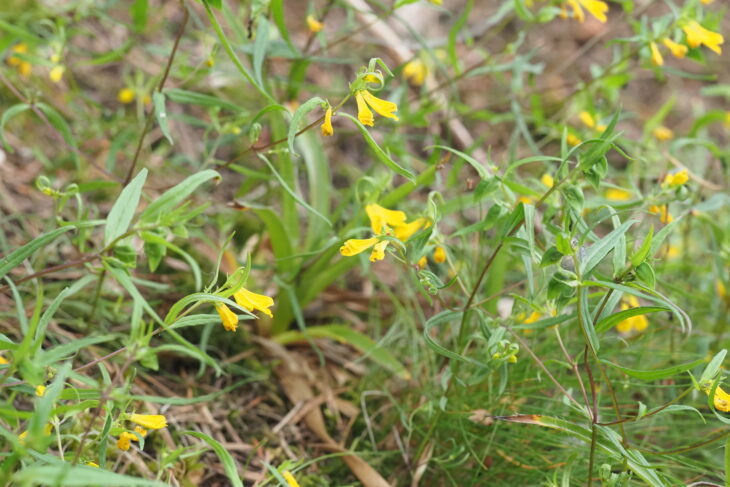
- Cow Wheat
This lovely small plant grows along large branches. The upper ridge resembles the ridge of a tiled roof. Don’t be fooled by the shining yellow leaves; much like the beloved mistletoe, cow wheat is a parasitic plant. They make use of incredible specialised root structures to intercept and invade the roots of other plants, where they can then siphon off the nutrients themselves. The flowers of cow wheat have long lips meaning that only insects with a long proboscis can reach the nectar inside, such as solitary bees, butterflies, and moths.
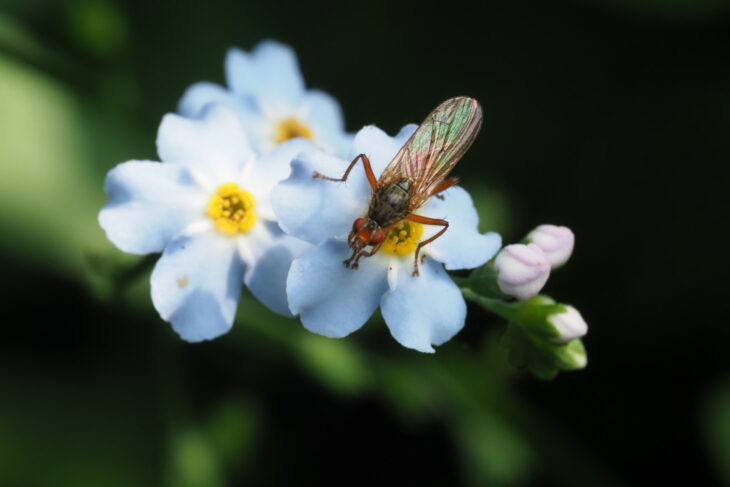
- Forget-me-not
This is my personal favourite flowering plant, and it has three really unique and interesting names. Legend has it that a knight died trying to collect a set for his love, and with his last dying breath called out ‘Forget me not’. It is named myosotis in Latin – translating to ‘mouse ear’ a lovely name owing to the resemblance of the petals to the most tim’rous of rodents. It is also sometimes known as the scorpion grass – owing to the way the flowers grow from the stem. They are pollinated primarily by flies, including the Anthomyiidae fly pictured here, as well as hoverflies.
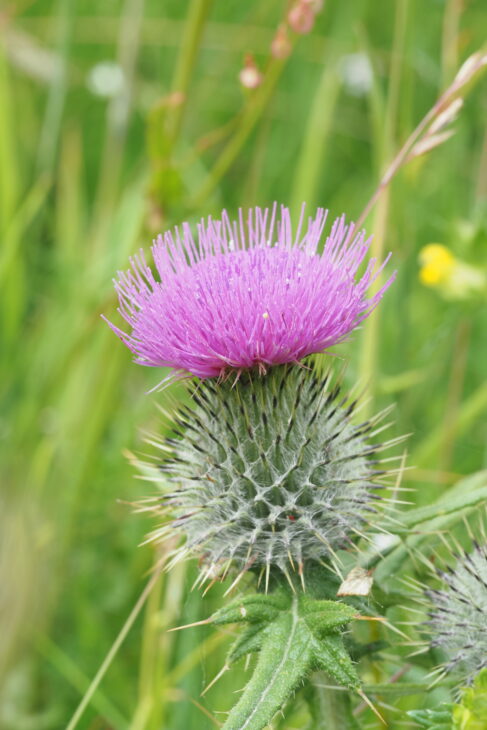
- Spear Thistle
A hardy favourite, and the national flower of Scotland is our hardy thistle. Pictured is the spear thistle, characterised by its spiny wings and bright pink-purple florets. It is known for its incredibly hardy nature but also its dramatic and beautiful appearance, much like the country it represents. The stems have traditionally been boiled and eaten, and can be used some kinds of tea, the seeds are a favourite of the goldfinch, making up 1/3rd of its diet! The spear thistle is one of the most highly nectar producing flowers throughout the entire UK, and is frequented by many pollinators, including wasps, bees, alongside butterflies like the peacock and meadow brown. Find this on the reserve from August through to October!
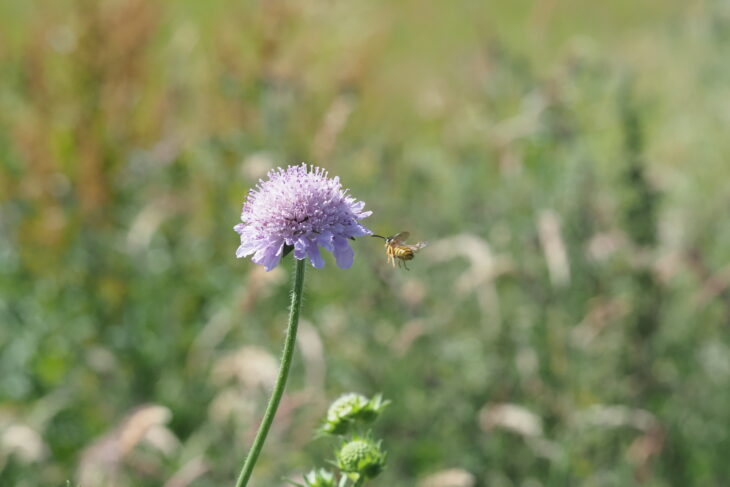
- Field Scabious
This is another plant of many names, some of my favourites being the bachelor’s button, the snake flower, and blue bonnet. It has a very rough and hairy stem, with a texture that is comparable to scabby skin – and it was for this reason that it was thought in the past that it was a medicine to treat scabies and hence where it got its name. The seeds are a favourite of linnets and finches, so a great addition to any garden if you are looking to attract more birds! It is pollinated by many butterfly species, as well as wasps like the yellowjacket shown here, and bumblebees.
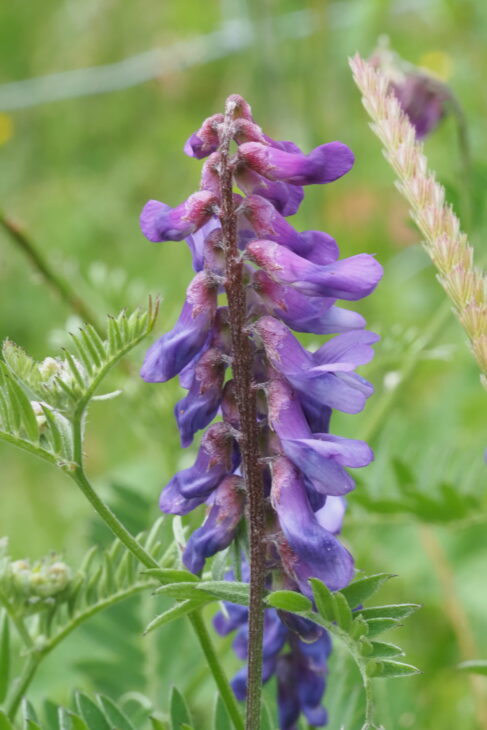
- Tufted Vetch
Our last flower on this list will unfortunately only be in bloom throughout August – the tufted vetch. This beautiful plant is comprised of clusters of up to 40 flowers in a wide array of colours, from light blues to deep violets, which creates a fantastic ombre effect when seen in isolation. Tufted Vetch is the perfect wildflower for gardens – it is a legume, and as with other legumes it has nitrogen fixing qualities, meaning that it will enrich the soil it is present in with nitrogen, enabling other plants to successfully prosper in that soil. It is pollinated often by butterflies like the meadow brown and comma, and it also by honeybees and bumblebees.
I hope this post has shown off some of the variety of pollinators and flowering plants at the Falls of Clyde. There is a fantastically diverse array of pollinators in nature beyond the bumblebee and honeybee which get most of the attention. I hope that some of you will make the trip down this August to see this most special interaction first hand.
Peter Fuller, Seasonal Ranger at Falls of Clyde
Help protect Scotland’s wildlife
Our work to save Scotland’s wildlife is made possible thanks to the generosity of our members and supporters.
Join today from just £3 a month to help protect the species you love.
Preface
To everybody planning a visit Falls of Clyde over the next month or so there is a load to look forward to on your visit. Corra Linn is glistening in …
